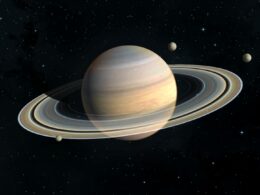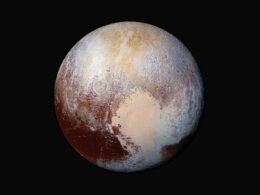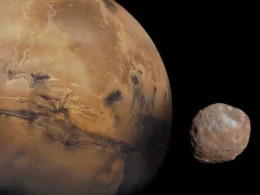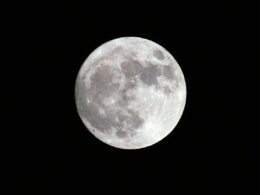Venus is the second planet from the Sun and is often called Earth’s sister planet due to its similar size and composition. However, there is one major difference between the two planets: Venus has no moons. While Earth has one natural satellite, the Moon, and Mars has two small moons, Phobos and Deimos, Venus stands alone in the solar system without any moons.
Despite the lack of moons, Venus is still a fascinating planet to study. It is known for its thick atmosphere, which is mostly made up of carbon dioxide, and its extreme temperatures, with surface temperatures that can reach up to 864 degrees Fahrenheit (462 degrees Celsius). Scientists have sent numerous spacecraft to study Venus and learn more about its unique characteristics. While these missions have not discovered any moons orbiting Venus, they have provided valuable insights into the planet’s geology, atmosphere, and history.
Venus in the Solar System
Venus is the second planet from the Sun and is the closest planet to Earth. Venus orbits the Sun at an average distance of about 67 million miles. It takes Venus about 225 Earth days to complete one orbit around the Sun. Venus rotates on its axis once every 243 Earth days, making its day longer than its year.
Orbital Characteristics
Venus has a nearly circular orbit around the Sun, with only a small eccentricity of 0.0067. This means that Venus’s distance from the Sun varies only slightly throughout its orbit.
Physical Properties
Venus is similar in size and mass to Earth, but its surface is very different. Venus has a thick, toxic atmosphere that is mostly carbon dioxide. The surface temperature of Venus is around 864 degrees Fahrenheit, making it the hottest planet in the solar system. The atmospheric pressure on the surface of Venus is about 90 times that of Earth, which is equivalent to the pressure at a depth of 1 kilometer in Earth’s oceans.
Venus has no moons or rings. While some early observations suggested that Venus might have moons, subsequent studies have shown that it does not. Venus’s lack of moons is thought to be due to its close proximity to the Sun, which would make it difficult for any moons to form and survive.
Exploration and Observations
Historical Observations
Since ancient times, Venus has been visible to the naked eye and has been the subject of many observations and studies. The ancient Romans named the planet after their goddess of love and beauty. In 1610, Galileo Galilei was the first to observe Venus with a telescope and discovered that it showed phases, similar to the Moon. This observation proved that Venus orbits the Sun and not Earth, as predicted by Copernicus’ heliocentric model, and disproved Ptolemy’s geocentric model.
Space Missions
In the modern era, space missions have allowed for more detailed observations and studies of Venus. NASA’s Magellan spacecraft, launched in 1989, used radar to map the planet’s surface and discovered that it is covered in volcanoes and impact craters. The spacecraft also found evidence of tectonic activity and a thick atmosphere that traps heat, making Venus the hottest planet in our solar system.
In 2006, the European Space Agency launched the Venus Express spacecraft, which studied the planet’s atmosphere and weather patterns. The spacecraft found evidence of lightning and discovered that the planet’s atmosphere is full of sulfuric acid clouds.
Astronomers continue to study Venus using ground-based telescopes and space-based observatories. With ongoing research, we can continue to learn more about this fascinating planet and its many mysteries.
Venusian Moons: Facts and Theories
Venus is the second planet from the Sun and is often referred to as Earth’s sister planet due to their similar size and composition. However, one major difference between the two is that Venus has no moons, while Earth has one.
The lack of moons around Venus has puzzled scientists for years. One theory is that Venus may have had moons in the past, but they were destroyed during a catastrophic event. Another theory is that Venus never had moons to begin with, as it lacked the necessary conditions for moon formation.
Research conducted by Alex Alemi and David Stevenson from the California Institute of Technology in 2006 suggested that Venus could have captured a moon from the asteroid belt. However, this theory has not been proven and remains controversial.
Magellan, a NASA spacecraft, orbited Venus from 1990 to 1994 and collected data that revealed the planet’s surface features, including its craters. While the surface of Venus is heavily cratered, there is no evidence of impact craters caused by moon strikes.
In summary, Venus does not have any moons, and the lack of moons around Venus remains a mystery. While some theories suggest that Venus may have had moons in the past or could capture one in the future, there is no concrete evidence to support these claims.
Venus’s Influence on Culture and Science
Mythology and Symbolism
Venus, named after the Roman goddess of love and beauty, has been an object of fascination for humans for centuries. The Greeks also associated Venus with their goddess of love, Aphrodite. In ancient mythology, Venus was often referred to as the morning star or the evening star, depending on its position in the sky. The ancient Egyptians also recognized Venus and believed it to be two separate celestial bodies, calling it the “morning star” and the “evening star.”
Venus’s phases have also been the subject of much interest and study. Galileo Galilei was the first to observe Venus’s phases in 1610, which helped confirm the heliocentric model of the solar system. In modern times, Venus has been the focus of many space missions, including NASA’s Magellan and Venus Express missions, which have provided valuable insights into the planet’s geology and atmosphere.
Scientific Impact
Venus has played a significant role in the study of planetary science, particularly in the search for life beyond Earth. As a terrestrial planet with a similar size and composition to Earth, Venus has been considered a potential habitable world. However, the planet’s harsh environment, with temperatures hot enough to melt lead and a thick, toxic atmosphere, has made it an unlikely candidate for life as we know it.
Despite this, Venus’s study has led to important discoveries about the nature of planetary atmospheres and the effects of greenhouse gases. Venus’s thick atmosphere, which is mostly composed of carbon dioxide, has created a runaway greenhouse effect, making it the hottest planet in the solar system. The study of Venus’s climate has provided valuable insights into the Earth’s own atmosphere and the potential effects of climate change.
In conclusion, Venus’s influence on culture and science has been significant throughout human history. From ancient mythology to modern space exploration, Venus has captured our imagination and provided valuable insights into the nature of our solar system and beyond.
Frequently Asked Questions
What is the total number of moons orbiting Venus?
Venus does not have any moons orbiting it. Although Venus is similar in size and composition to Earth, it does not have any natural satellites.
Why does Venus not have any natural satellites?
The reason why Venus does not have any moons is still a topic of research and speculation among scientists. One theory suggests that Venus may have had moons in the past, but they were destroyed due to a collision with a large object or ejected from the planet’s orbit due to gravitational forces. Another theory suggests that Venus’s proximity to the Sun and its strong gravitational pull may have prevented the formation of moons in the first place.
Can you list the planets in the Solar System by their number of moons?
Which planets in our Solar System have no moons at all?
Mercury and Venus are the only two planets in our Solar System that do not have any moons.





